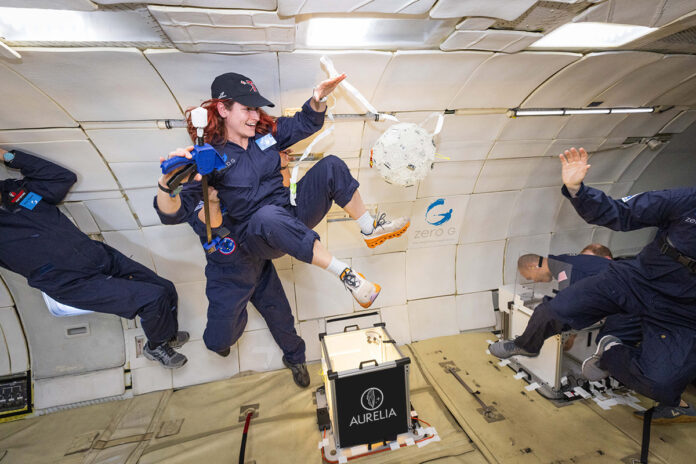Introduction to Aurelia Institute
As spaceflight becomes more affordable and accessible, the story of human life in space is just beginning. The Aurelia Institute, a nonprofit organization, aims to make sure that the future of space benefits all of humanity, whether in space or on Earth. Founded by Ariel Ekblaw, Danielle DeLatte, and Sana Sharma, the institute serves as a research lab for space technology and architecture, a center for education and outreach, and a policy hub dedicated to inspiring more people to work in the space industry.
Mission to Make Space Accessible
At the heart of the Aurelia Institute’s mission is a commitment to making space accessible to all people. A big part of that work involves annual microgravity flights that Ekblaw says are equal parts research missions, workforce training, and inspiration for the next generation of space enthusiasts. The institute has done these flights every year, bringing together people from different backgrounds, including artists, designers, architects, ethicists, and teachers.
The Beginning of Aurelia
Much of Aurelia’s work is an extension of projects Ekblaw started as a graduate student at MIT. Ekblaw’s life trajectory changed when she came to MIT, where she gained the skills, technology, and community to spin out Aurelia and do something important in the space industry at scale. As an undergraduate at Yale University, Ekblaw took part in a NASA microgravity flight as part of a research project. In her first year of her PhD program at MIT, she led the launch of the Space Exploration Initiative, a cross-Institute effort to drive innovation at the frontiers of space exploration.
The TESSERAE Project
In 2016, Ekblaw got the idea for the TESSERAE Project, in which tiles autonomously self-assemble into spherical space structures. The project began as a research group but soon raised enough money to conduct microgravity flights and, more recently, conduct missions to the International Space Station and the moon. The TESSERAE system was tested on microgravity flights run by the Space Exploration Initiative, in a suborbital mission with the space company Blue Origin, and as part of a 30-day mission aboard the International Space Station.
Education and Outreach
Aurelia offers open-source classes on designing research projects for microgravity environments and contributes to several education and community-building activities across academia, industry, and the arts. Every year, Aurelia charters a microgravity flight, bringing about 25 people along to conduct 10 to 15 experiments. To date, nearly 200 people have participated in the flights across the Space Exploration Initiative and Aurelia, and more than 70 percent of those fliers have continued to pursue activities in the space industry post-flight.
Designing for Space and Earth
The self-assembly work is only one project in Aurelia’s portfolio. Others are focused on designing human-scale pavilions and other habitats, including a space garden and a massive, 20-foot dome depicting the interior of space architectures in the future. The architectural work is asking how to outfit these systems and make the habitats part of a life worth living. With all of its work, Aurelia’s team looks at space as a testbed to bring new technologies and ideas back to our own planet.
Conclusion
The Aurelia Institute is working towards a future where space benefits all of humanity. Through its research, education, and outreach efforts, the institute is inspiring a new generation of space enthusiasts and working towards making space accessible to all people. As Ekblaw says, "When you design something for the rigors of space, you often hit on really robust technologies for Earth." The work of the Aurelia Institute is an exciting step towards a future where space exploration and development benefit not just those in space, but also those on Earth.

